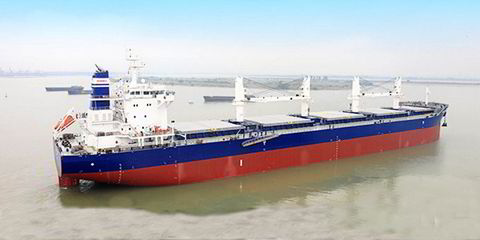LOC Group has been taking a hard look at what lies in store for its main technical consultancy and casualty response lines, in the hope of keeping ahead of ongoing changes.
A reduction in casualties and in demand for surveys, as well as reforms among its main customers in the marine insurance markets, are some of the direct challenges to its business.
Chief executive RV Ahilan told TradeWinds: “This is a period of change. If we don’t fight it, we will only become extinct.”
There have been changes in the ownership of the London-headquartered company’s competitors as marine services groups buy into the consultancy sector. In the past two-and-a-half years, TMC Marine has been taken over by French classification society Bureau Veritas, Brookes Bell by insurance services company Thomas Miller and Braemar Technical Services by private equity firm Aqualis.
Private equity firm Bridgepoint took a 27% stake in LOC in 2013, but the ownership remains predominantly in the hands of employees.
However, its rivals now have big-name backers, which bring additional technical and back-room support and a network of potential customers.
Ahilan insisted there has been no impact on LOC’s leading position among marine technical consultants. “We have been much more nimble and maintained our profitability as a percentage of our revenue more than any of our competitors,” he said.
“In terms of size, I would say we are bigger than AqualisBraemar and we are significantly bigger than Brookes Bell and TMC.”

Ahilan believes one key strength that has helped LOC maintain its edge in the salvage sector is the nine representatives it has on the Lloyd’s of London panel of 49 special casualty representatives (SCRs).
That has become a significant asset, because hard-pressed marine insurers are increasingly seeking to keep a tight lid on salvage costs, in which SCRs play an important role. That role is related mostly to Lloyd’s Open Form emergency salvage work but is increasingly being applied to wreck removal situations in which the SCR represents stakeholders by identifying allowable costs and monitoring progress.
LOC deputy chairman Andrew Squire said the appointment of an SCR can often be just the start of its involvement in a casualty.
“We often also provide supporting services like naval architecture or structural engineering or whatever is required to assist the parties,” he said.
Ahilan said the long-term trend is for a decline in casualty numbers, but larger ships and greater environmental awareness mean that when accidents do happen, greater technical skills are required to deal with salvages.
That helps LOC, he believes: “Greater autonomy and IT has reduced the number of incidents, but when things go wrong, they tend to go wrong spectacularly.”
The world’s most expensive wreck removal, the $1.2bn salvage of the 114,000-gt Costa Concordia (built 2006), off the coast of western Italy, is one example where the appointment of an LOC SCR turned out to be a big revenue earner for the company.
Greater autonomy and IT has reduced the number of incidents, but when things go wrong, they tend to go wrong spectacularly
’CEO RV Ahilan
One method of keeping ahead of the game is LOC’s global network of connections in the shipping centres to carry out instructions issued mainly by London or Scandinavian insurers.
“We have a lot of relationships in those regions which are really helpful when you are dealing with local authorities where local knowledge and local contacts are really important,” Squire said.
But the marine insurers, particularly in the Lloyd’s of London market, that issue LOC’s instructions are themselves going through changes to improve their poor profitability.
Nikos Benetis, LOC’s director of hull and machinery and financial institution advisory services, has already begun to talk to insurers, to see how LOC can help them improve their business in line with Lloyd’s modernisation blueprint.
“We are seeing this transition going through the insurance world which is talking about optimising the risk assessment at the front end. Underwriters are asking: ‘What is it I am underwriting, why am I underwriting it and how do I optimise my returns?’ They have some plans and we want to be part of those plans,” Benetis said.
LOC is also working with financial institutions to help them develop the Poseidon Principles, a project to encourage investment in green ships and help the IMO reach its carbon-reduction goals by 2050.
“We’ve spoken to banks who are excited about our product,” Benetis said.
“We have produced something that ticks the box in terms of crunching the numbers but also supports the financial institutions in terms of what should be the strategy going to achieve the green fleet by 2050.”






